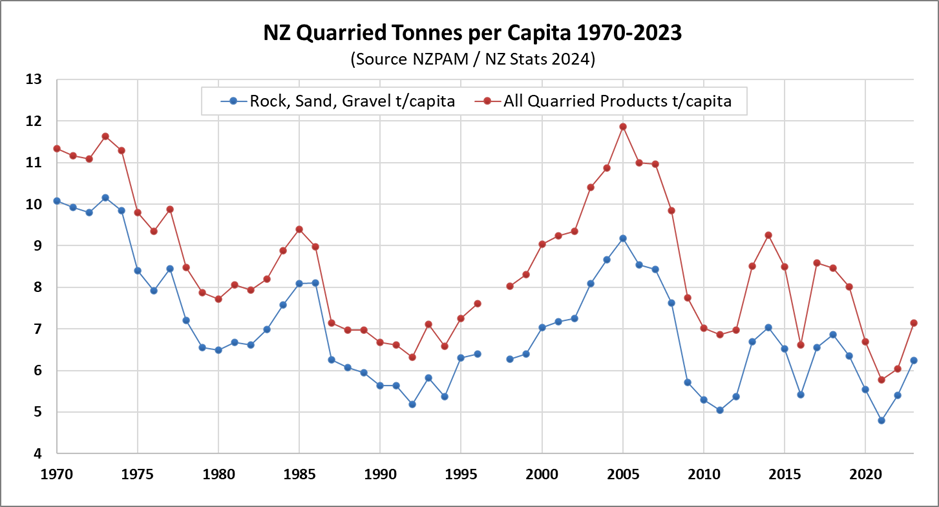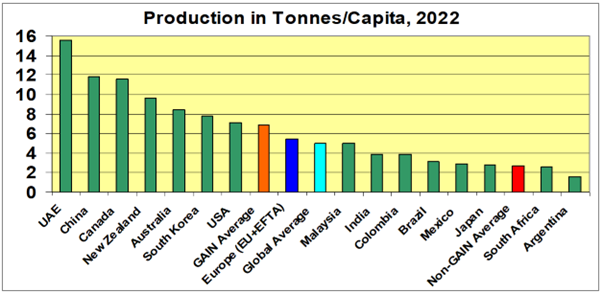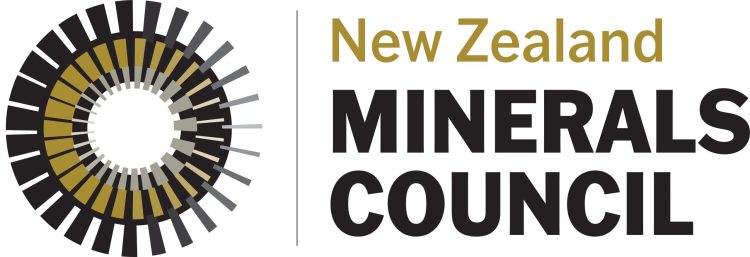AGGREGATE & QUARRY ASSOCIATION
Fact Files
Aggregates, rock, sand and gravel are the most consumed bulk product in the world after water.

DID YOU KNOW?
- New Zealand uses 8-10 tonnes of aggregate every year for each adult and child.
- To enable us to travel, live and work, each individual in New Zealand uses on average 1kg of aggregate every hour.
- To build an average house, you need about 250 tonnes of aggregate – for use in concrete, asphalt, mortar and building products.
- To build 1km of a two-lane highway, you need around 14,000 tonnes of construction aggregates (500 truck and trailer loads).
- Quarrying needs to be carried out close to where materials will be used. This keeps transportation costs low and helps to minimise building costs and emissions in local communities.
- The quarry industry is committed to working alongside local communities and follows stringent planning, environmental and operating conditions.
- New Zealand needs to plan ahead and protect our aggregate supplies – so we can provide affordable houses for Kiwis and continue to build and repair our infrastructure.
Aggregates are fundamental to the lives of everyday New Zealanders. Without an on-going supply of aggregates, the production of concrete and the development of buildings, roads and infrastructure would come to a standstill.
2023 AGGREGATE PRODUCTION STATISTICS
New Zealand Petroleum and Minerals (NZPAM) latest statistics, collected from 464 quarries show the highest quarried material production in four years of 37.3 million tonnes reported for the 2023 year. That works out at 7.1t per capita (in red below). When corrected for the response rate (not all quarries report their tonnages), total production is 45Mt for the year which equates to 8.6t per capita for every Kiwi (about one truckload each).

The output per quarry continues its gentle upward trend for 2023. The output per quarry is shown in the following graph.

Looking at quarried material uses, 2023 showed most aggregates continue to be used for roading, followed by building aggregates. Roading was steady at its normal trend, at around 50% of quarried material, while building aggregates softened slightly from the 2022 high to 34% of production.


The direct revenue earned from the 37m tonnes of aggregates produced was reported to be $766M in 2023. The overall economic benefit of quarrying (and mining) to our country is $2.4 billion per annum. Over 3200 people are directly employed in over 1000 quarries around NZ (WorkSafe September 2024 data).

COUNTRY/TONNES PER PERSON
Per person, New Zealand is one of the highest aggregate consumers in the world. This section shows some international comparisons.
New Zealand – 8.6t/person (2023) industry estimate
Canada 7.7t/person (2023)
Australia – 7.5t/per person (2023)
United States – 7.4t/person (2023)
Europe 5.4t/person (2022)
South Africa 2.5t/person (2022)
The following graph shows the tonnes produced per person for the 2022 year from GAIN member countries.

LOCATION AND TRANSPORT
And this graph compares New Zealand’s regional production over the last decade.
Quarried products are generally very low value, on average around $20/tonne. Once a load of aggregate is taken more than 30km from a quarry, the consumer is generally paying more in cartage costs than for the actual aggregate. That’s why it’s crucial that aggregates are sourced as close as possible to where they are needed.
Regional production (t/person) is shown around New Zealand in the following image. Note that Waikato and Northland have very high production per capita as about 30% of their production is carted to and used in the Auckland region.

And this graph compares New Zealand’s regional production over the last decade.

To see the locations of quarries in New Zealand, have a look at these links:
AQA Quarry Database (Latest), Operating Quarries:
https://koordinates.com/layer/120770-aqa-quarry-database-latest/
AQA Quarry Database (Historic):
https://koordinates.com/manage/data/layers/121858/details/
MORE LIKE THIS
DOWNLOADS
ABOUT QUARRYING IN NEW ZEALAND
USING AGGREGATE
Aggregates are the most consumed bulk product in the world after water. New Zealand uses 9-10 tonnes of aggregate every year for each adult and child.
BUILDING NZ
To build an average house, you need about 250 tonnes of aggregate - for use in concrete, asphalt, mortar and building products.
OUR COMMUNITY
The quarry industry is committed to working alongside local communities and follows stringent planning, environmental and operating conditions.
AFFILIATED ORGANISATIONS












